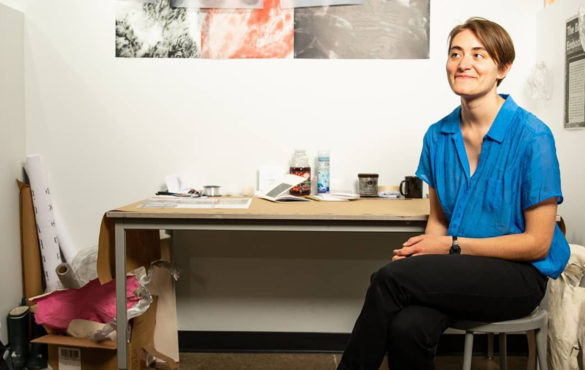Willa Goettling is an artist originally from Seattle, Washington. Willa moved to Chicago for three years to partake in the Columbia College Book and Paper MFA Program. During this time, Willa interned at Spudnik Press and worked at Spudnik briefly before moving to New York City.
Willa Goettling was interviewed by Ashley Houghton as part of her Spring 2020 Internship at Spudnik Press Cooperative. Ashley is a printmaker pursuing her MFA at the School of the Art Institute of Chicago.
Ashley Hougton (AH): What do you do in New York?
Willa Goettling (WG): I am currently working at a paper making studio called Dieu Donne. They primarily work with artists in residence–some big names like Ann Hamilton and Richard Tuttle and some more up and coming artists. Dieu Donne was created by Susan Gozin who typically works with established artists without paper making experience to produce an edition. I’m the Education Coordinator for them, so I’m working on building up their programing, creating new classes and syllabi, training teachers, that kind of thing.
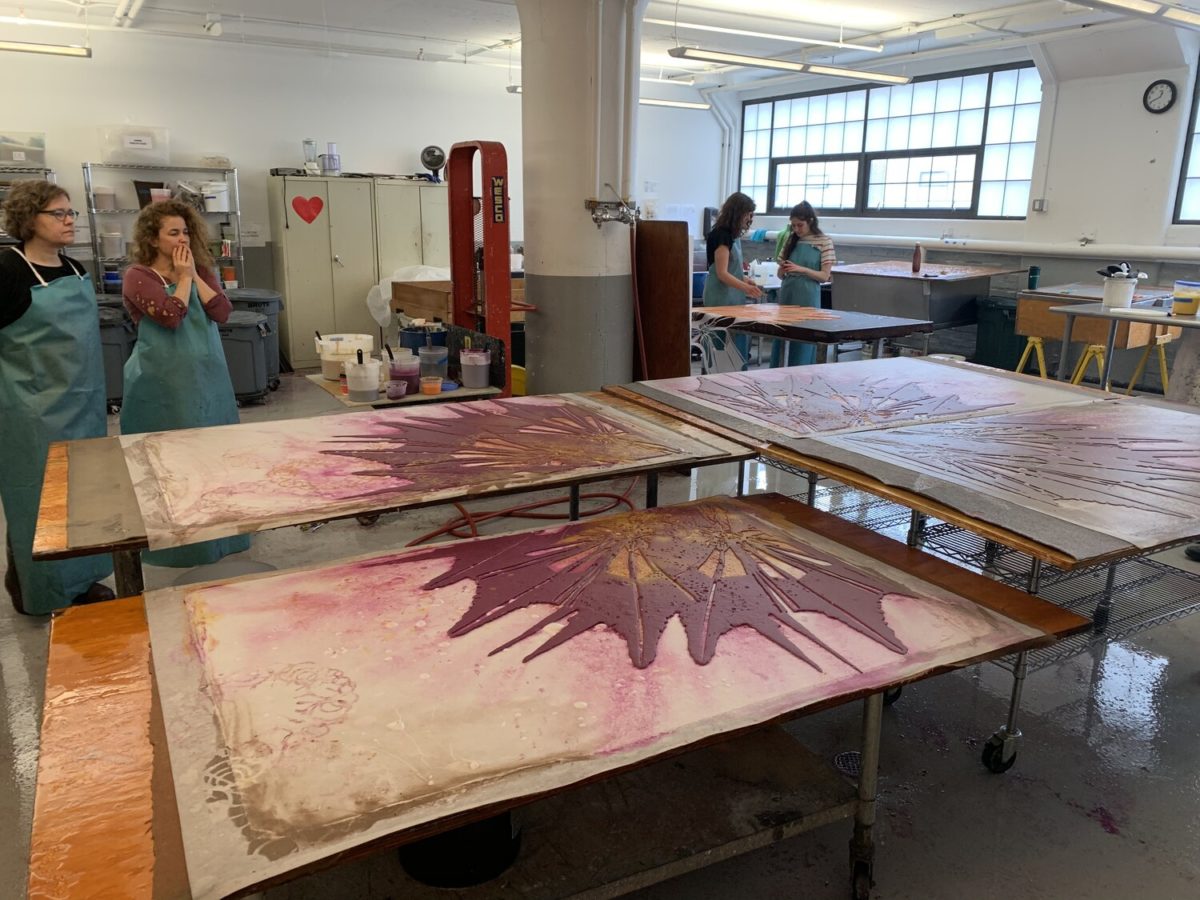
Dieu Donne paper studio
AH: What made you want to get into education?
WG: There is always room for learning. Teaching yourself new skills, teaching other artists new skills, and helping them expand their practice is something that is really exciting to me. I’m also really interested in accessibility and working in education outside of universities and colleges. Universities and colleges are expensive options for education and limit who feels accepted and welcome in those institutions. Working for a smaller organization, like Spudnik or Dieu Donne, that offer classes to the community on a workshop to workshop basis, is something that is really interesting and exciting to me.
AH: How does the art scene in New York compare to the art scene in Chicago?
WG: When I was living in Chicago, there were so many small pockets of artists supporting each other and on a smaller scale. The DIY circuit and the smaller gallery circuit is really supportive and accessible for new artists in the city. Your entry into the Chicago arts scene may be quicker and less focused on credentials compared to a city like New York. In Chicago there is more room to operate on your own terms. In New York, there is so much competition. There are so many art institutions and artists that there is more focus on where you went to school, where you trained, and what galleries and museums you have shown at. New York artists are a little more focused on being “professional artists”.
AH: What was your introduction to art?
WG: Ever since I was a little kid I identified as being a creative person. I don’t know if I would have called myself an artist, but creativity has been wrapped up with my identity for a long time.
I didn’t study art in undergrad. I studied medical anthropology and global health. The reason is that, besides it being an interesting area of study, it was hard for me to justify going to school for art as a first generation college student coming from a working class family. I felt like art was something that I could always do on my own time, continue developing myself, and build a community around outside of school. I don’t know if I have any regrets towards that, but I definitely second guess it every once and awhile. The more I’m in the art world the more it feels like having both, an undergraduate and masters degree in the arts, means more opportunities are open to you.
AH: What inspires your current art practice?
WG: I went to the book and paper MFA program at Columbia College because I have always been interested in communicating narrative through art. If I’m not reading or writing, putting a series of ideas into a book, or self publishing, I like to use printmaking to make multiples and have multiple pieces of art all be in communication with each other. I’m interested in art as a form of storytelling and a form of spreading information.
Recently I’ve been interested in looking at my own relationship to my body and the cultural, economic, and societal impacts that the body absorbs–especially the feminine body. Being someone who came from a working class background and has a bunch of laborers and craftspeople in my family, capitalism has definitely affected the way that we move throughout the world. We have developed a sense of self within a world that does not value labor or the people who have jobs that are heavy in manual labor.
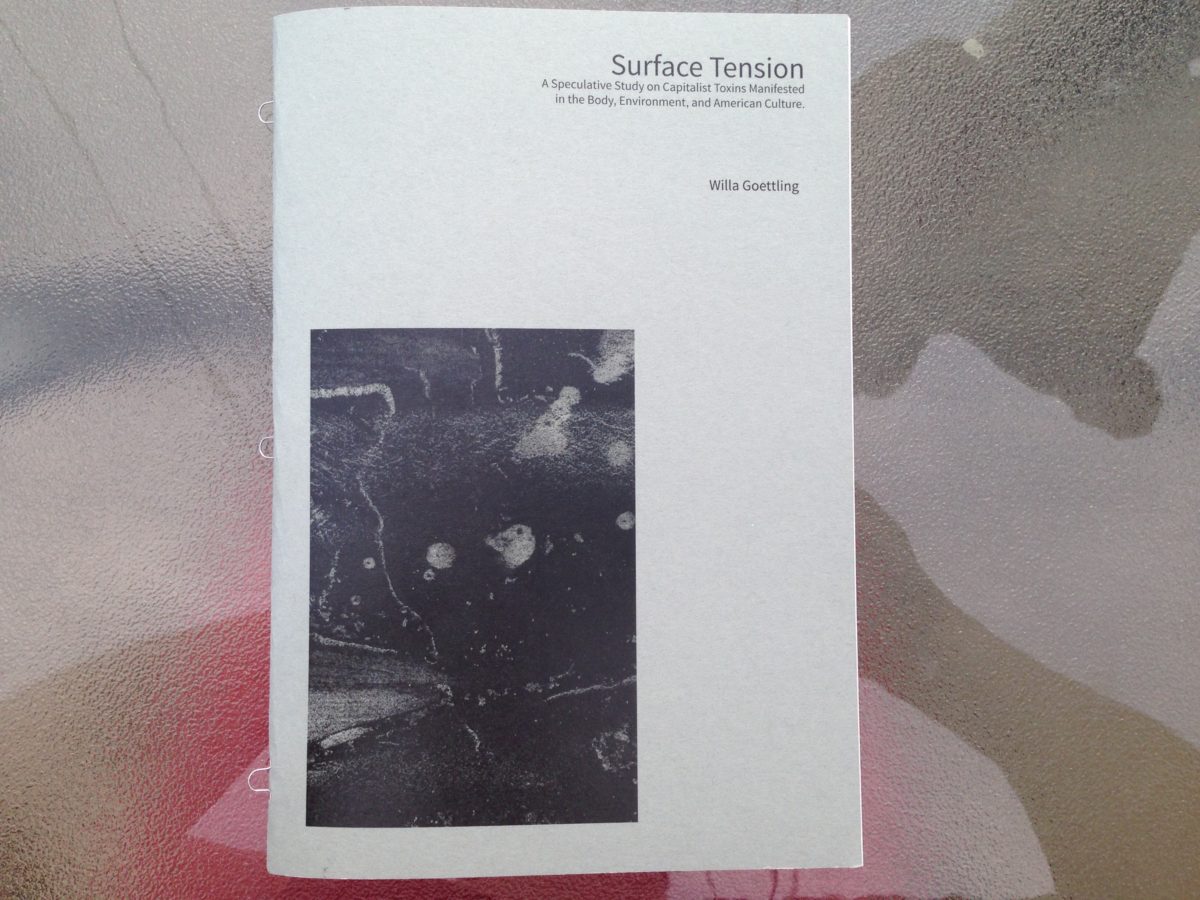
Surface Tension Artist Book (Cover)
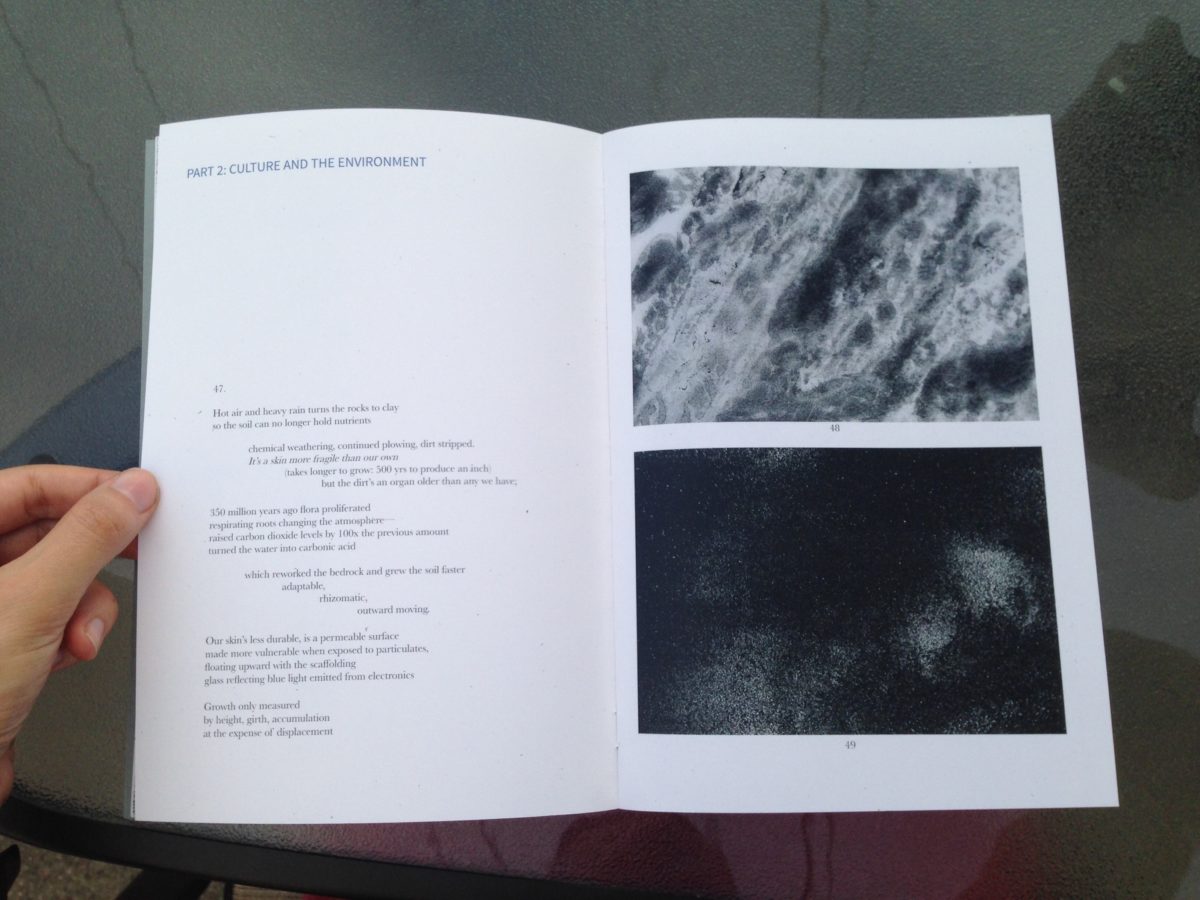
Surface Tension Artist Book (Detail)
AH: Can you tell me more about capitalism and its impact on the body?
WG: Capitalism is tied to systematic oppression of who has access to money, health, power and jobs and who doesn’t. Capitalism affects bodies very differently depending on race, class, sexuality, and ability. For me, I have a pretty disconnected relationship to my body because it’s so wrapped up in our access to health care and health care being a money making industry. As US citizens do not have equal access to health care, there is a huge disparity in who has time to address physical or mental health issues. The “American Dream” of being able to work your way up to another bracket feels like the carrot that is always being dangled in front of you. Depending on which economic class you are born into, the “American Dream” is extremely hard to actually achieve. Further, if you do make it out of your class bracket it’s at the expense of your body and your health.
AH: In your bio you mention that you are “motivated by a desire to feel more connected to and in control of your body”. Are you motivated to explore that connection as a concept or does your art making process make you feel more connected to your body?
WG: I think it’s a combination. When I was in grad school it was more theoretical and I explored the person-body relationship as a concept rather than actually developing a closer relationship to my body. Because grad school is so time consuming, I pushed off my relationship to my body in a lot of ways and denied my body just because there was so much else required of me. However, making art and using that time to reflect on the disconnect has become really valuable to me.
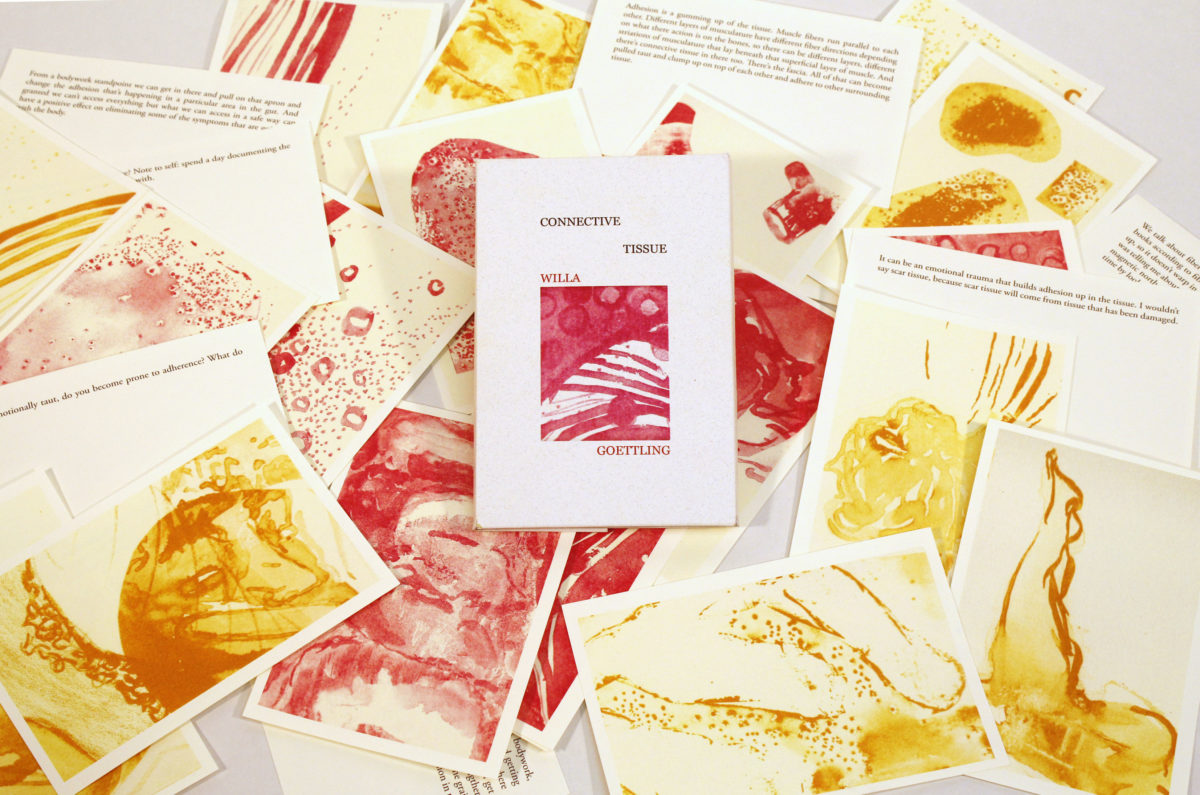
Connective Tissue Artist Book
AH: What are you working on currently?
WG: Currently I’m working on a project centered around handmade paper. This medium feels very holistic to me. I can grow and process my own fibers for paper making, and there is a huge variety with what I can do with those fibers after I turn it into pulp: I can work sculpturally, I can make two dimensional pieces, I can paint with the pulp, I can embed things into it, and so on. The project I’m currently working on is still in the idea phase. I want to work with my dad who is a stonemason and take some of his work clothes and turn them into pulp for papermaking. Then, I want to create casts of the stones he works with on a regular basis in the paper made from his clothes. The casts can pick up a lot of details. A lot of my process also has to do with focusing on the process itself and whatever is the end-all-be-all, or the product of the process, feels a little secondary to me.
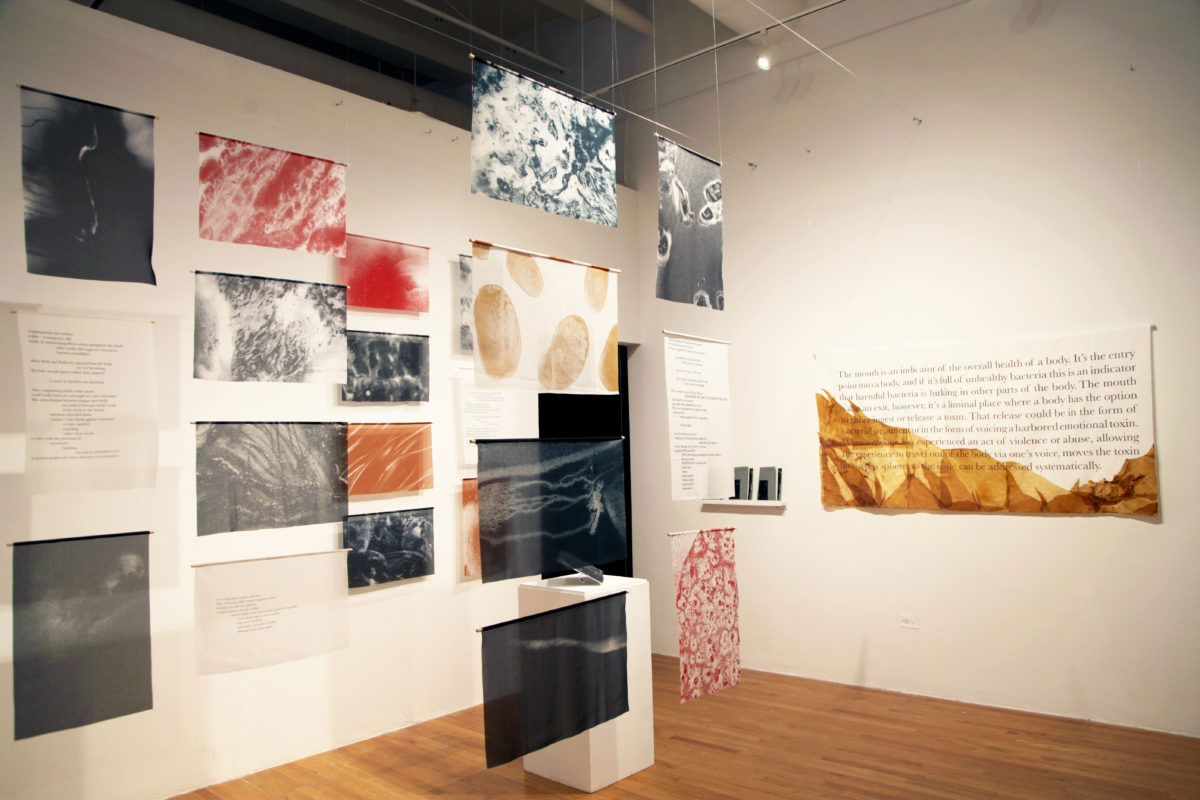
Surface Tension Installation
Sometimes the product is more directed if there is text that I want to put into a book. I have an idea of how I want that text to be laid out and what the book would look like. With something that is more of an installation or a group of objects, the process is a really big part of figuring out what the end product will look like. I like the idea of having some sort of document of my dad’s labor and turning that labor into something beautiful.
AH: How has your work shifted since graduating from graduate school?
WG: Having just graduated from a graduate program and coming back to myself and my art practice outside of school, there are subtle shifts happening in my work. I’m trying to figure out what space my work makes the most sense in; if gallery spaces are best, or if I would rather stick to independent publishing and continue working in education at non-profits. Sometimes it’s harder to justify making work out of school, but I definitely believe in continuing to make art just as a way of better understanding the world. I think that is reason enough.
AH: Can you tell me about your experience as an intern at Spudnik?
WG: I basically had no screen printing experience when I was at Spudnik but I did have some relief printmaking and etching experience. I got to work with Angee Lennard and Nicolette Ross to edition some artists’ prints. The most complicated and exciting of those projects was by Edie Fake. It was an 8 layer screen print and half of those layers were rainbow rolls, in which multiple colors are blended in one layer. As an introduction to screen printing I arguably started with the most complicated technique. I learned A LOT while I was there and I really loved Spudnik as a model. Being in New York I’ve realized there are no studios that offer open studio hours to the public for as cheap as Spudnik does and I think in that way Spudnik is extremely accessible.
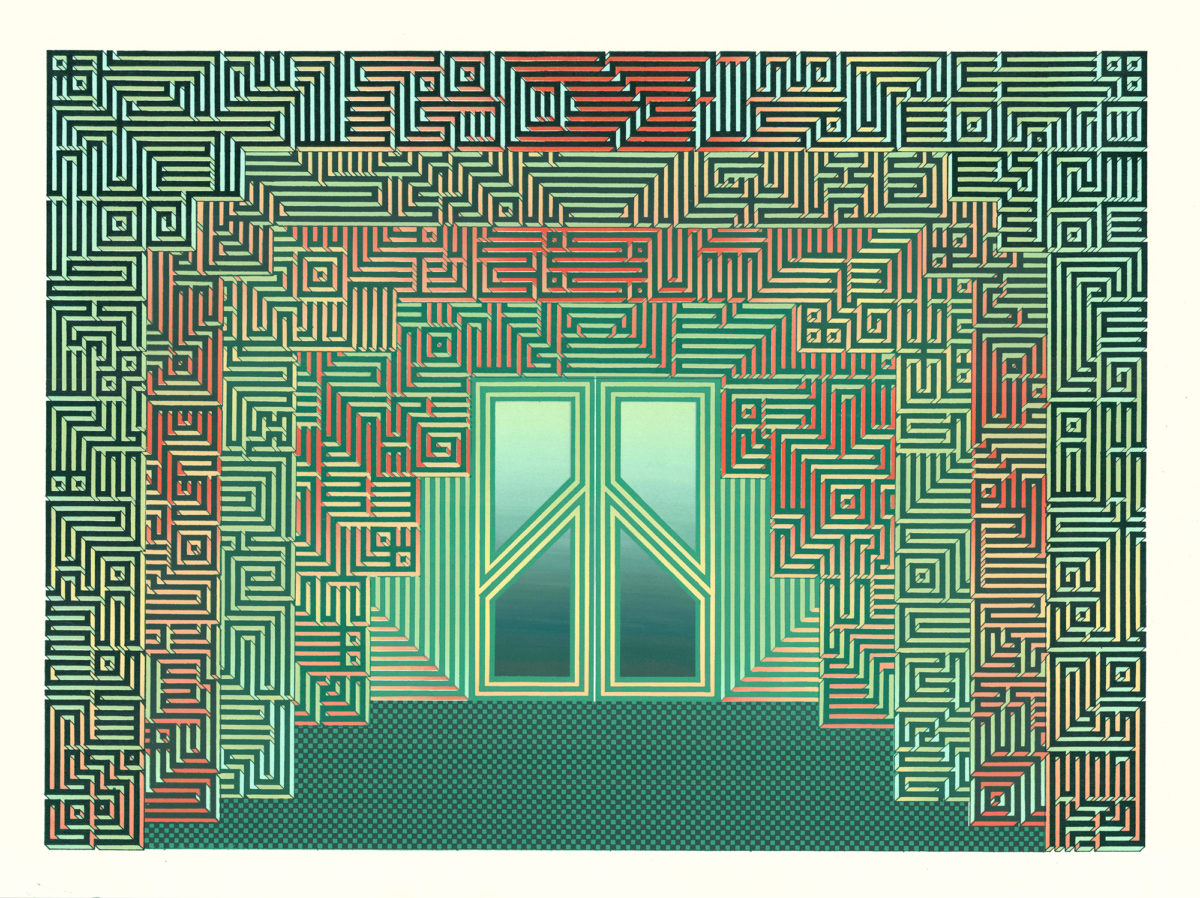
The Processing Department, Edie Fake (Published by Spudnik Press)
AH: When you’re not doing art what do you like to do for fun?
WG: If I’m not making visual art or writing, I play music very casually. I play drums. I’m not playing in a band right now but that’s something that I like to do with friends. It keeps me socially accountable and it’s also just nice to get together with people and work on creative problem solving with others. I also like to read and have been watching a lot of Schitt’s Creek lately.
AH: Willa’s artist book, Notes From My Body, is part of the Joan Flasch Artist Books Collection at the School of The Art Institute of Chicago, which is available for viewing by appointment.
